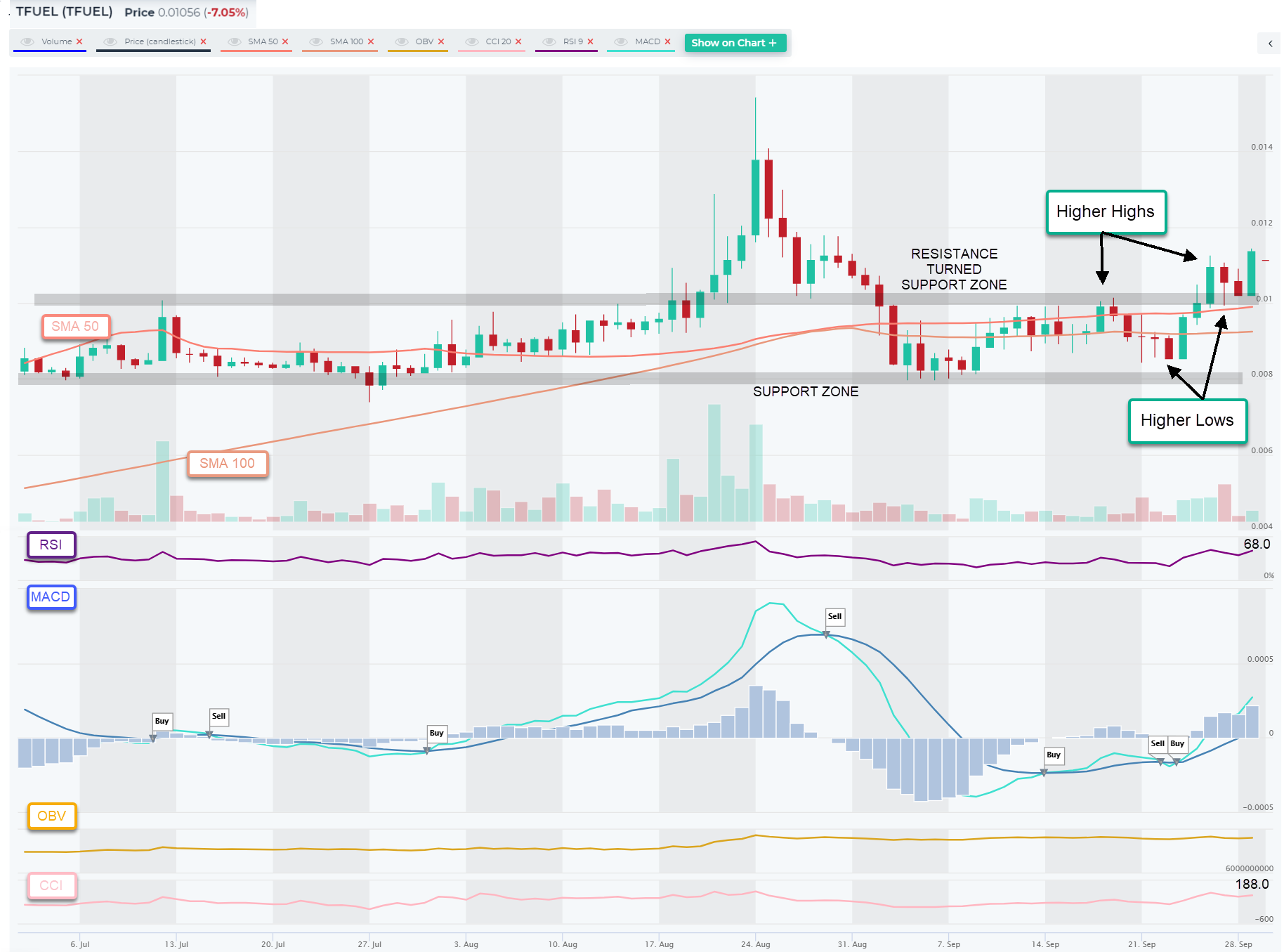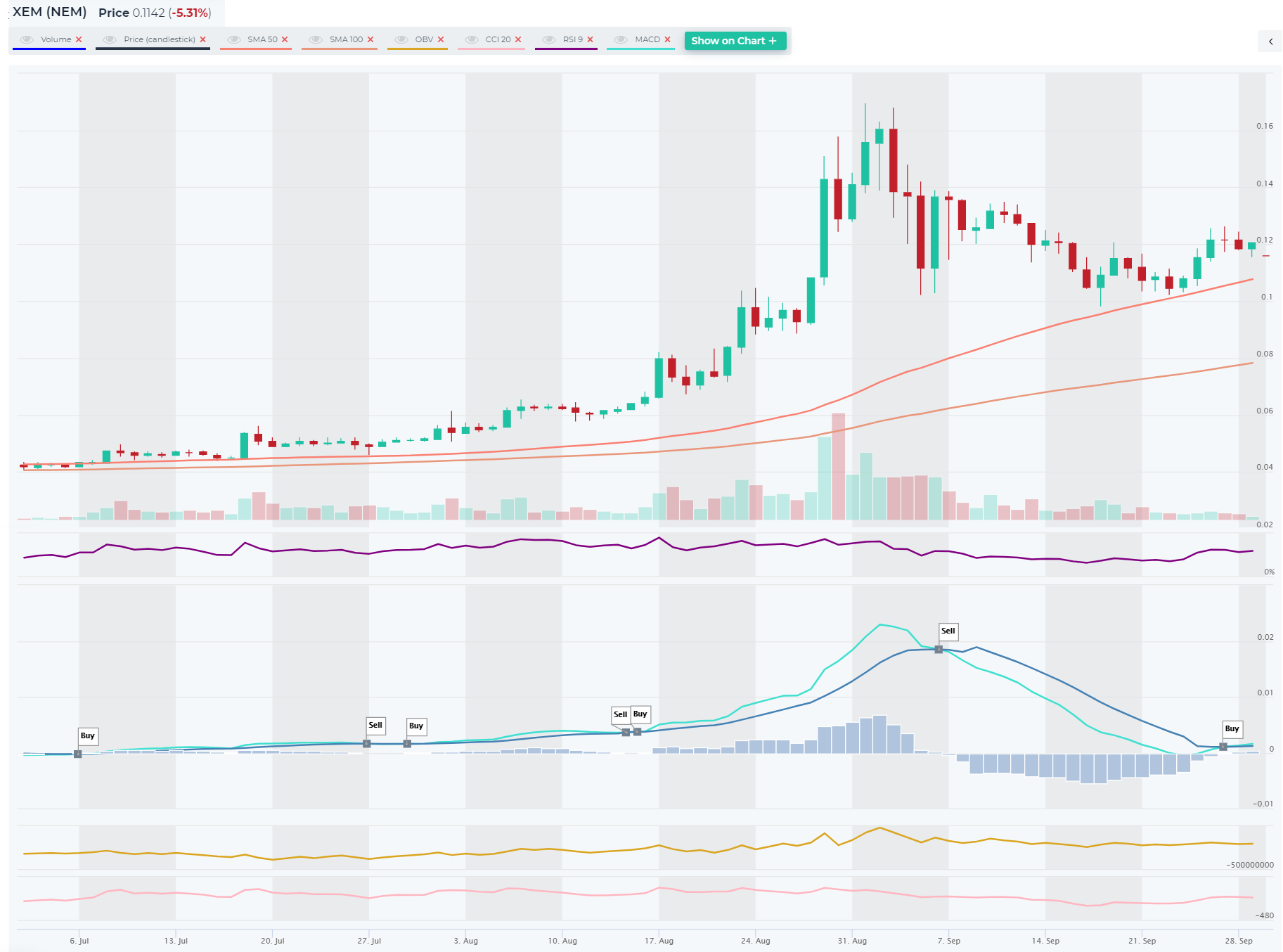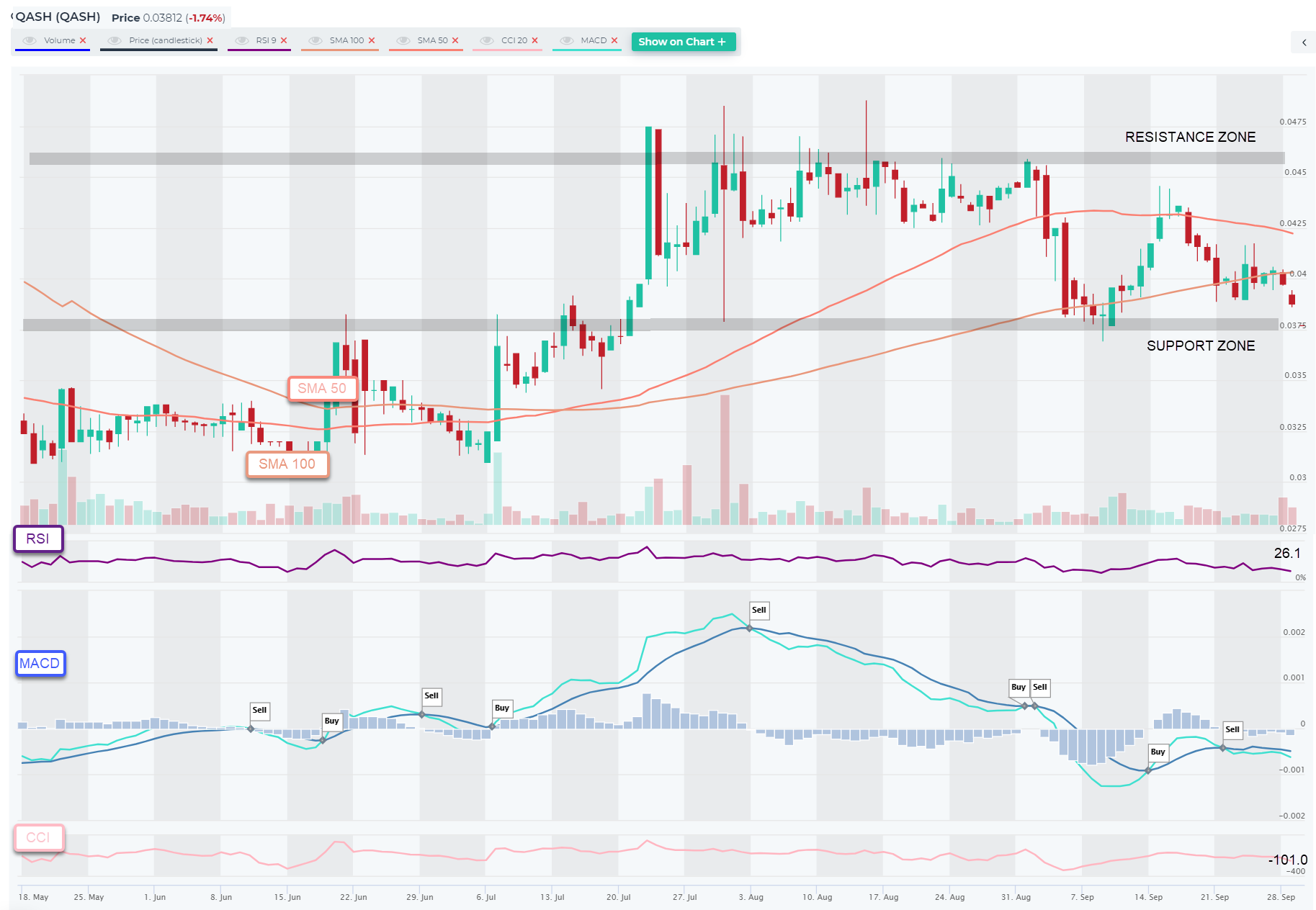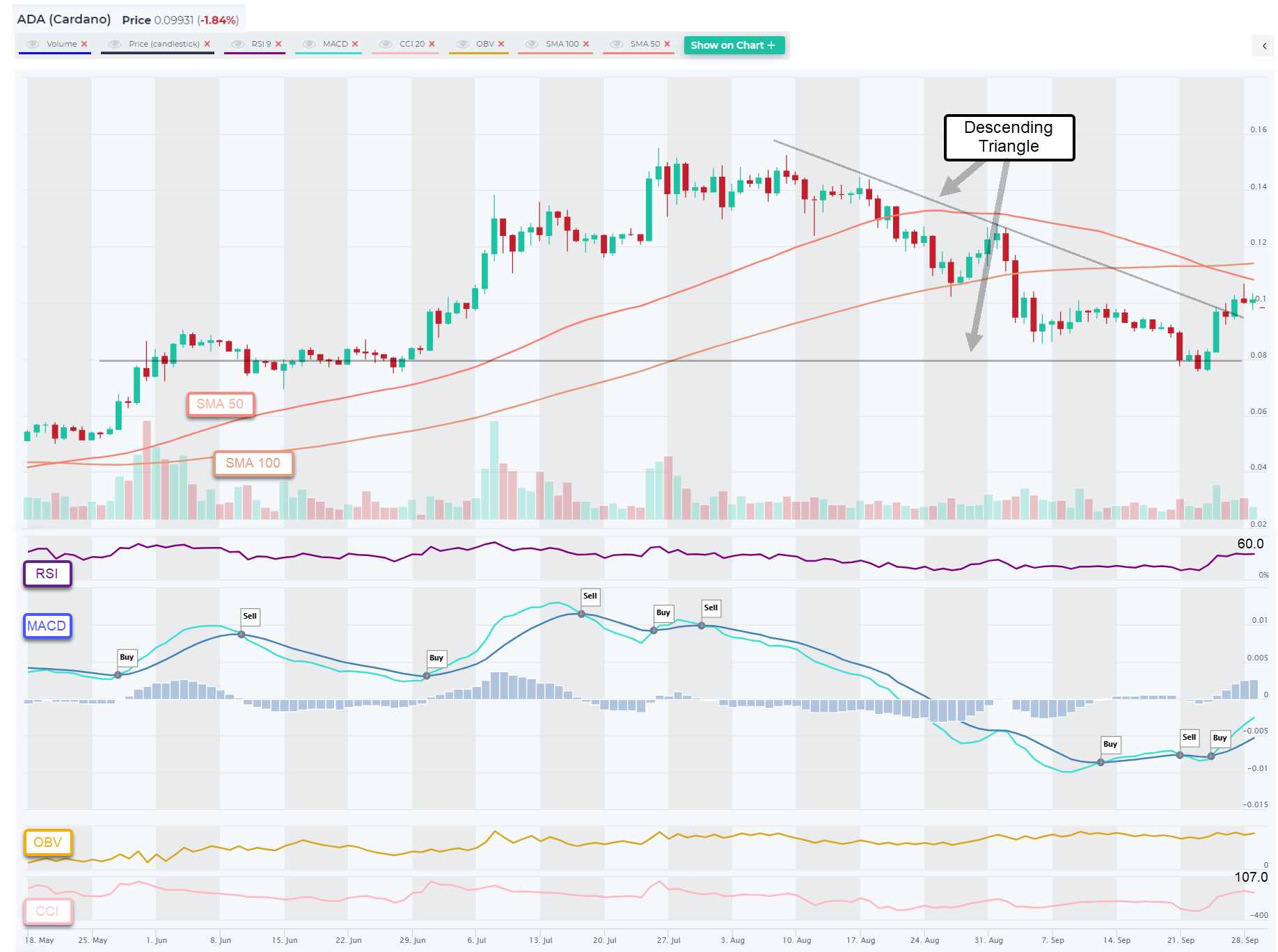Triangles, Channels, Trends....TFUEL, BNB, XEM, LET, QASH, ADA, ATOM
Without much foreword, we’re highlighting some interesting situations. Notice that identifying support and resistance (horizontal or diagonal trendline), are key to basic technical analysis (TA). Most of the action happens around those areas, as we explained here.
Strong Up Trend with continued momentum: THETA, CEL. We analyzed THETA already on Sep 22nd here, and CEL here.
Fresh bullish momentum within an uptrend. We noted TFUEL as a nice emerging trend here, but let’s get an update. Also, a couple of coins with renewed bullish momentum are BNB, XEM.
You can find these situations on your own by building a custom screener.
Theta Fuel (TFUEL) is showing very promising signs of an uptrend renewal. It bounced off its strong support zone @ $0.008, then broke through resistance @ $0.010, which turned into support now. We’re seeing an uptick in momentum with bullish crossovers in RSI (>50), MACD, and CCI (>-100). Also, price has formed a couple of Higher Highs and Higher Lows, which is textbook uptrend. It’s early, but the odds are in the Bulls favor. Stop Loss (or Alert) should be set at $0.010.

Binance Coin (BNB) was mentioned in our post on Sep 10th here, and it’s been working, despite a pullback. That pullback from $32.50 to $22.50 is still just that, a pullback in a general uptrend. We’ve just set a higher low at the support @ $22.50, and momentum is regaining steam as indicated with bullish crossovers of RSI (>50), MACD, CCI (>-100), and rising OBV.

NEM (XEM) has also recently received bullish signals in RSI, MACD, CCI, although OBV isn’t convincing yet and overall volume has thinned out during this bounce. So the jury is still out on whether this is a start of a sustainable uptrend, but there are some green shoots.

We recently discussed trading channels. Swing traders can go to town with it, Buying at Support and Selling at Resistance. Let the oscillator indicators (RSI, CCI, STOCH…) be your guide as well. Ideally the price is close to the support AND oversold, and conversely, close to resistance AND overbought. Coins trading in a channel: QASH, ADX, DOCK.
For example, QASH is sitting at its support @ 0.375, and is very oversold on RSI (<30) and CCI (< -100). There’s a good chance it bounces off and heads north towards the resistance zone again.

LET appears trading in a Channel Up, and is nearing its support @ $0.0125 . It is likely to bounce up higher again after reaching lower trendline (now). It also shows a couple of higher highs and higher lows, early indications of an uptrend.

Descending triangles. As we discussed in recent post, Descending Triangles are typically bearish and resolve in a breakout through the support line. A swing trader can trade between the trendlines (Buy at Support, Sell at Resistance). Or a trader can wait for a breakout, either Up or Down, ideally with a big decisive move and big volume, to avoid false breakouts. There are times when price breaks out to the upside, forming a Bullish Reversal as it appears in ADA and ATOM.
Cardano (ADA) has broken out, although not so decisively, a few days ago, after it bounced off a strong support level @ $0.08. We also saw bullish crossovers in RSI (>50), MACD, and CCI (>-100).

Atomic Coin (ATOM) has also broken out recently, also not so decisively, after it bounced off a strong support level @ $4.00 We also saw bullish crossovers in RSI (>50), MACD, and CCI (>-100).

Risk management – Stop Loss and trade size. In all of these setups, traders should use Stop Loss orders to manage their downside risk, in case the trade goes against us, as it often will. Trading is about probabilities and even though these setups have a high win rate, one must be prepared to minimize losses on the trades that go bust. If Stop Loss order types are not supported by they exchange, at least set up a price alert (see video). Also, trade size should be such that you never risk losing more than 2% of your total equity. Keeping the trade size small allows the trader to setup a wider Stop Loss, which gives the trade more room and time to complete with success. Setting Stop Loss levels too tight can often result in getting knocked out of a trade prematurely.
Disclaimer: This content is for informational purposes only, you should not construe any such information or other material as investment, financial, or other advice. There are risks associated with investing in cryptocurrencies. Loss of principal is possible.